Café de la Poste, as most bistros in France do, posts their daily plate du jour on a chalk board displayed prominently in the front of the restaurant. A stroll around the picturesque village is a must after lunch. so before we talk about our second lunch, here are a few pictures of Goult's beautiful old homes of stone and ochre.
 |
| Notice the olive trees in their yard |
I was fascinated with their pretty doors and the attention to detail the French pay in their decorations and flowers. Someone had a sense of humor when they named the one above. It would be interesting to know how old it is.
This cute group of young French school doors approached us while we were shopping at the market and asked if we were Americans. As part of their school's celebration Armistice Day, they had written a poem thanking the Americans for their part in liberating their country from Adolph Hitler’s Nazi Germany and asked if they could read it to us. It was ironic that the French celebration of Armistice Day was only a few weeks before our own visit to Normandy. Paying our respects to the troops who had served and fallen in Normandy was something Meakin has always wanted to do. It was a long drive from Provence, but well worth it. We stayed in Bayeux and visited the American, British and German cemeteries as well as Omaha Beach. The residents of Bayeux love the Americans and will come right out and tell you that their village was the first to be liberated. The loss of so many young lives and all of the crosses in the cemeteries were very sad to see. More on the trip to Normandy later.
The menu for our second dejeuner (lunch) at Café de la Poste is shown on the chalk board in the beginning of the post. We were pleased that our lovely waitress from our first visit greeted us warmly and said she remembered us from our first visit. This is just one of the charming things about small villages and bistros in Provence. They appreciate your business.
For our entree, we both chose the crème brûlée with salmon, caramel balsamic and roquette (arugula) salad.
For the main course we chose le tartare de boeuf (raw beef French style) or what we call steak tartare. As you can see it is raw beef served with condiments on the side. Beef tartare has been a favorite in the Hoffer household since Meakin was a boy and the recipe for his version is below. It is very popular in France and we saw le tartare de boeuf on many menus during our stay.
Raw beef is not for everyone, but those of us who love it, really, really love it and consider it a treat. If it’s not your thing, you might want to skip this part and scroll down until you see the photo of Cafe de la Poste's pretty little individual pear clafoutis for dessert.
Steak tartare is very finely chopped raw sirloin or filet of beef mixed with onions, capers and seasonings served on toast or a crispy baguette. It is imperative that you use the finest and freshest steak available since it’s eaten raw. I know we all talk often about the quality of ingredients, but in this case it is essential with no exceptions. Steak tartare is a bistro dish in France and is traditionally served with frites and a salad. Sometimes Meakin chops his own meat by hand as Anthony Bourdain suggests in his Les Halle’s cookbook, but if you’ll tell the butcher that you plan to serve it raw and you know the store and the quality of meat they sell, the butcher can chop it for you. Never, and I repeat, never use the food processor. It turns the meat to mush.
Be sure to take the meat home promptly, don’t let it get warm in the car, and eat it right away. Serve it on slices of a (buttered) crunchy baguette or lightly buttered toast points along with fries (I made oven fries), a fresh green salad dressed with a French vinaigrette (recipe here), and pour a nice glass of red wine. We like a good French Cote du Rhone. An ice cold imported beer is also excellent served with steak tartare. Select your guests carefully, because steak tartare tastes way too good to have someone throw it away.
In the US in forties and fifties steak tartare was served as an appetizer at cocktail parties on party rye. I’ve found that a crunchy lightly buttered French baguette or crisp buttered toast points are a far superior companion to the raw beef than the soft party rye bread. The contrast in texture of the crunchy bread with the soft spicy meat allows your mouth to taste a distinctive texture difference and the crunch is a much better carrier of the seasoned raw meat than combining two soft textures.
Meakin’s Steak Tartare
From My Carolina Kitchen – serves 4
Printable Recipe
Place one egg yolk in a bowl and add ½ teaspoon prepared horseradish, 2 anchovy fillets, 1 teaspoon Dijon mustard, 3 dashes of Worcestershire sauce, 3 good shakes of hot sauce such as Tabasco, and mix well with a fork, mashing the anchovies as you go. Add ¾ of a pound of top quality freshly ground sirloin, ½ of a small white onion, finely chopped, 2 teaspoons drained small capers (chop if large), a couple of tablespoons of finely chopped parsley and mix well with a fork. Season the mixture with kosher salt and freshly ground black pepper to taste. Serve immediately on lightly buttered (use really good butter) slices of a crunchy French baguette or buttered toast points. If you like, top with thin slices of French cornichons or serve them on the side.
Cook’s notes: There are several ways to present the tartare – with the raw egg yolk on top, with the egg mixed into the meat along with the condiments, and with the condiments on the side for the individual dinner to incorporate into the meat.
Never ones to turn down clafouti (according to Julia Child's Mastering the Art of French Cooking it is also spelled with a final “s” in both singular and plural) for dessert, we both choose the individual pear clafoutis, lightly brûléed on top, sprinkled with almonds and served alongside crème fraiche sprinkled with brown sugar. I don’t think Julia Child’s recipe for a clafouti can be beat, so I’ve adapted her recipe and added the brûlée and almonds for My Carolina Kitchen's version of Café de la Poste’s Le Clafoutis Poire with Amandes.
My Carolina Kitchen’s version of Café de la Poste’s Le Clafoutis Poire with Amandes
Adapted from Julia Child’s Clafouti aux Poires, Mastering the Art of French Cooking by Julia Child – serves 6
Printable Recipe
3 cups peeled, cored, and sliced ripe pears (1 ¼ to 1 ½ lbs pears)
¼ cup sweet white wine, kirsch, or cognac
1/3 cup granulated sugar
Batter:
Liquid from the pears plus enough milk to equal 1 ¼ cups
1/3 cup granulated sugar
3 eggs
1 Tablespoon vanilla extract
1/8 teaspoon salt
2/3 cup sifted all-purpose flour
An electric blender
A 7-8 cup lightly buttered, fireproof baking dish or Pyrex pie plate
Garnishes:
Sugar to brûlée the top of the clafoutis
Toasted almonds, optional
Powdered sugar
Whipped cream or crème fraîche, optional
Preheat oven to 350 degrees F. Use fresh pears in season and let them stand for 1 hour in the sweet white wine, kirsch, or cognac and sugar.
Place the batter ingredients in your blender jar in the order in which they are listed. Cover & blend at top speed for 1 minute. Pour a ¼” layer of batter in the lightly buttered baking dish or pie plate. (If you are making individual clafoutis, divide the batter between 6 to 8 small ceramic ramekins, depending on their size and proceed with recipe.) Put in the oven to let the batter set. Remove, spread the drained pears over the batter, then pour on the rest of the batter and smooth the surface with the back of a spoon.
Place in middle position of preheated oven and bake for about an hour. (If you are baking the clafouti in individual ramekins, I would check them at 45 minutes to see if they are done.) The clafouti is done when it has puffed and browned and a needle or knife plunged into its center comes out clean.
Sprinkle the clafouti with a little sugar evenly on the top and heat with a kitchen blowtorch until the sugar caramelizes evenly. Allow to sit at room temperature for a minute until the sugar caramelizes and hardens. Sprinkle with toasted almonds and a dusting of powdered sugar. It need not be served hot, but should still be warm. It will sink down slightly as it cools. If desired, serve with whipped cream or crème fresh sprinkled with brown sugar on the side.
Cook’s notes: Many other fruits are great in a clafouti, including cherries (recipe in this post), peaches, blueberries, or raspberries.
I thought you might get a kick out of seeing these whole pigs being delivered to Café de la Poste's kitchen, where they will butcher and cut them up in house themselves. It’s just one more reminder that there's no doubt you’re in France.
We highly recommend Café de la Poste when you visit the Luberon area of Provence, information below. I’m certain that you won’t be disappointed.
Café de la Poste
Rue de la République
84220 Goult
+33 4 90 72 23 23
For better viewing, click photos to enlarge.
This will be shared with Foodie Friday at Rattlebridge Farm and Miz Helen’s Country Kitchen Full Plate Thursday.
Have a great weekend everyone.





















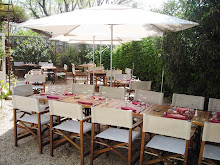

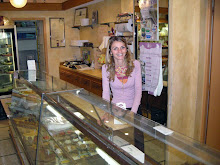





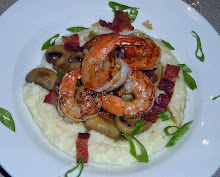

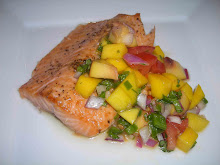












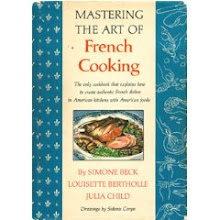

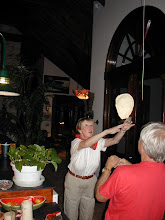
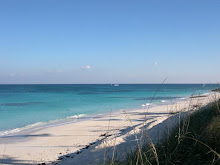


Such a lovely place! The food looks delicious.
ReplyDeleteCheers,
Rosa
What a beautiful place!
ReplyDeleteRaw beef is not really for me, but my husband for sure loves it.
I did not skip the steak tartare! It is a favorite that is rarely (no pun intended) available here. Delicious post!!
ReplyDeleteBest,
Bonnie
Setting up house for a while in a village in France sounds like an amazing experience Sam. So much to explore while enjoying the rhythm of daily living.I did have steak tartare as an h'ors douevres at one of the long table dinners I am exploring this year.
ReplyDeleteNo question, Goult is charming! What a fun post, filled with mouth watering food and eye candy locations. Never have been a fan of steak tartare, but my DIL adores it and when she visits, makes us take them to the restaurant here that serves it just the way she likes it. She'll love Meakin's version...will send it on to her.
ReplyDeleteHow sweet about the young French filles..
ReplyDeleteand mes Ruines made me smile.
Our girls love tartares..we're not there yet:)
What a beautiful my kind of town♥
I have dreamed of visiting the Provence region ever since I read Peter Mayle's books on living there. Thank you for taking your readers along on your trip. Julia's clafouti is a favorite of mine, and I'm looking forward to trying your adaptation.
ReplyDeleteI'm not sure about eating the raw beef, but I would have enjoyed the stroll around the village - great shots as always.
ReplyDeleteWhat a wonderful place~
ReplyDeleteSam, Very nice photos... I tried reading (figuring out) what that menu said and I got a few words but its been 54 years since I took French in prep school. I didn't do too well. I used to order steak tartare for my staff when we went out to a top notch German restaurant in Chicago. Back in the late 80s it was a big selling item. Now its hard to find on a US menu. My dad is buried in an American cemetery over in Lorraine...so I'm always happy to hear that the French still appreciate the sacrifice that our troops made. Take Care, Big Daddy Dave
ReplyDeleteLovely!
ReplyDeleteI happen to have had le tartare de boeuf in a really nice restaurant in Beverly Hills several years ago. We all shared it for an appetizer just in case we were not a brave as we thought. I think it was served with capers and shallots and toast points if I am remembering correctly.
ReplyDeleteThose little French girls are adorable.
I've never been a fan of raw beef but I certainly love a rare beef tenderloin if that counts :) Everything about that restaurant and the village surrounding it is charming. The architecture is wonderful! I
ReplyDeleteYour dessert looks beautiful Sam! Poor piggies:@)
ReplyDeleteHi Sam, looks like such a wonderful place to visit, charming in every way.
ReplyDeleteLooks like an amazing place to spend a few days, weeks, months. Your pictures make me want to go!
ReplyDeleteYour pear clafouti is beautiful Sam. There is nothing more charming than French villages.
ReplyDeleteWhat a charming village! And what an enticing menu - I'd have a hard time choosing. Your steak tatare reminds me how long it's been since I fixed this treat -- maybe soon. And pear clafoutis sounds an excellent thing to do with some of the pears that are ripening on our tree. I've only ever used cherries.
ReplyDeletebeautiful place and how special that the children read the poem to you hugs
ReplyDeleteI prefer carpaccio to tartare, but I love your stories.
ReplyDeleteI'm taking notes from your wonderful posts about Provence and hope to visit some of the lovely places you recommend on a future trip. I consider steak tartare a very special treat but haven't had it in years. It was a favorite appetizer in the '70's. Thanks so much, Sam, for sharing your dream trip with your friends.
ReplyDelete